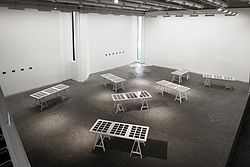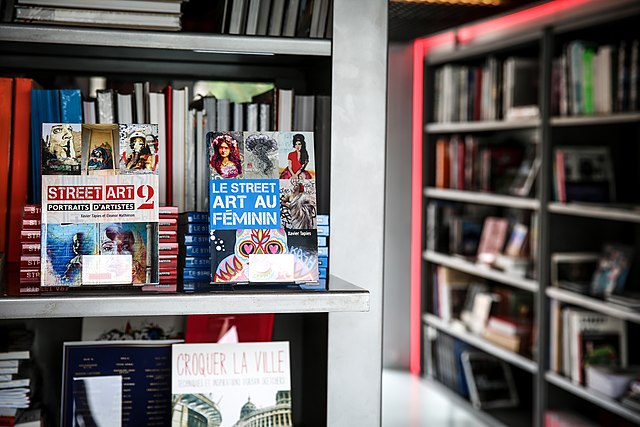Contemporary art gallery in Trinity College Dublin, Ireland From Wikipedia, the free encyclopedia
The Douglas Hyde Gallery is a publicly funded contemporary art gallery situated within the historical setting of Trinity College in Dublin, Ireland.[1]
Gailearaí Dhubhghlas de hÍde | |
 Installation photograph of 'Fotografias' by Fischli/Weiss in Gallery 1, The Douglas Hyde Gallery, March 2009 | |
| Established | 1978 |
|---|---|
| Location | Nassau Street, Trinity College Dublin, Ireland |
| Coordinates | 53°20′36″N 6°15′28″W |
| Type | Contemporary art gallery |
| Director | Georgina Jackson |
| Website | douglashydegallery |

The Gallery was co-founded by the Arts Council and Trinity College Dublin. It opened to the public in March 1978 as the first publicly-funded gallery dedicated to contemporary art and the first university gallery in Ireland.[2] When the Gallery opened in 1978, it was for a number of years Ireland's only public gallery of contemporary art. In 2017 Georgina Jackson was appointed director, taking over from John Hutchinson who was director for 25 years.[3]
The Douglas Hyde Gallery consists of two exhibition spaces that are used to show concurrent exhibitions, which often have a relating theme or tone.
Gallery 1, designed by Paul Koralek of ABK Architects, is the Gallery's main space and has played host to solo-exhibitions by renowned artists such as Fischli/Weiss, Marlene Dumas, Gabriel Orozco, Mona Hatoum and Peter Doig. Notable Irish artists who have exhibited in Gallery 1 include: Dorothy Cross, Willie Doherty, Gerard Byrne, Patrick Graham, Patrick Hall, Michael Warren, Kathy Prendergast, Aleana Egan, Sam Keogh, Niamh O'Malley, Isabel Nolan, and Sean Lynch.[4]

Gallery 2, which opened in 2001, was designed by McCullough Mulvin Architects. In addition to exhibitions by contemporary artists, this space was often used by director John Hutchinson to show small collections of ethnographic objects and artefacts, or outsider art, which are generally marginalised by larger museums and galleries. The most popular of these exhibitions have included: Nepalese Shamanic objects,[5] Japanese Tea Bowls[6] and Ghanaian Asafo Fante Flags.[7]
A number of exhibitions in Gallery 2 fall under ‘The Paradise’ series of shows, which invites artists to create a new work or present a series of works based on their own idea of ‘The Paradise’. As of February 2011, there have been 34 exhibitions in The Paradise series.
The Douglas Hyde Gallery produces publications for many of its exhibitions. These books can take the form of exhibition catalogues, artists’ books or curated projects and, while extremely different in content, they all share a similar exterior presentation. Since 2002, the Gallery has published over forty books in this small, hardback format.
The Leaves & Papers series of books and leaflets is an ongoing project which allows The Douglas Hyde Gallery to produce and publish ideas, images and texts relating to a specific theme or concept which does not always relate directly to the Gallery's programme.
Another ongoing series of books documents the Galley's programme while also highlighting some of the central principles of the Gallery and its exhibitions. The books explore ideas about visual culture, identity, and spirituality through carefully selected texts and imagery. These books include: the bread and butter stone, 1997; Patmos, 1999; 33 Happy Moments, 2003; Alabama Chrome, 2007; The Bridge, 2008; Questions of Travel, 2009; Saunter, 2010.
The Douglas Hyde Gallery has become increasingly well known for its programme of musical events.[citation needed] In recent years, Cat Power, Sufjan Stevens and Laura Veirs have all played in the Gallery. Sometimes the musical performances relate directly to exhibitions: In 2008, Jandek performed a concert to coincide with an exhibition of his album covers and in 2009, Jim White played a gig to celebrate the opening of his exhibition of ephemera from the American South.[citation needed] It is more often the case that the performances and exhibitions share a mood or atmosphere rather than a direct connection.[citation needed]
Seamless Wikipedia browsing. On steroids.